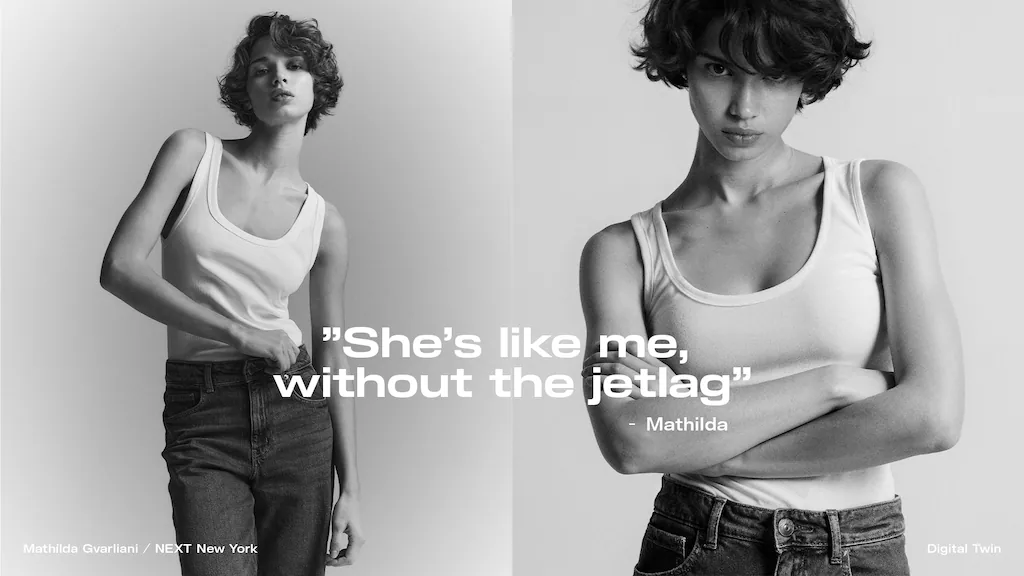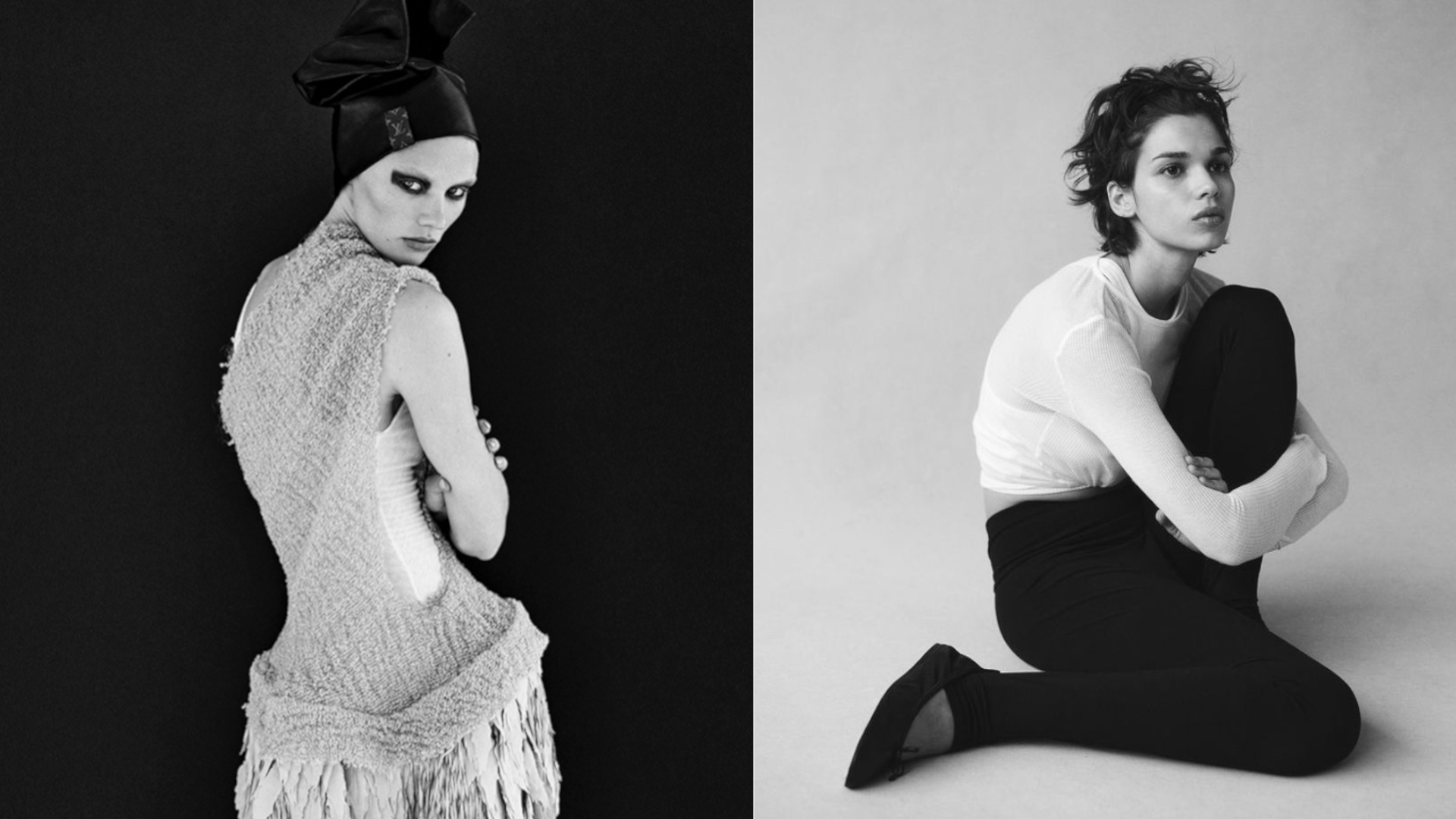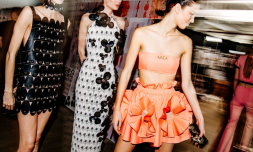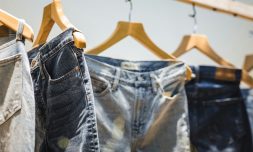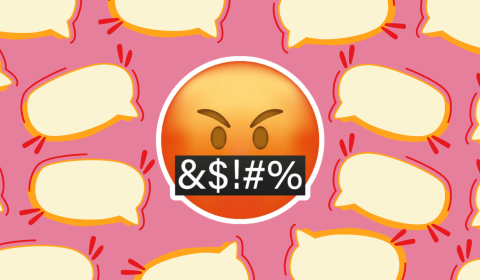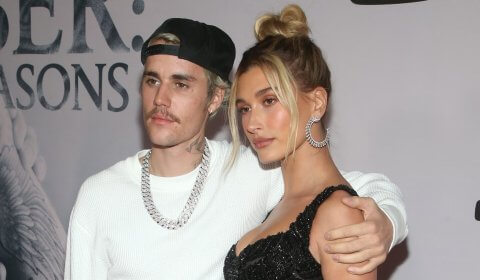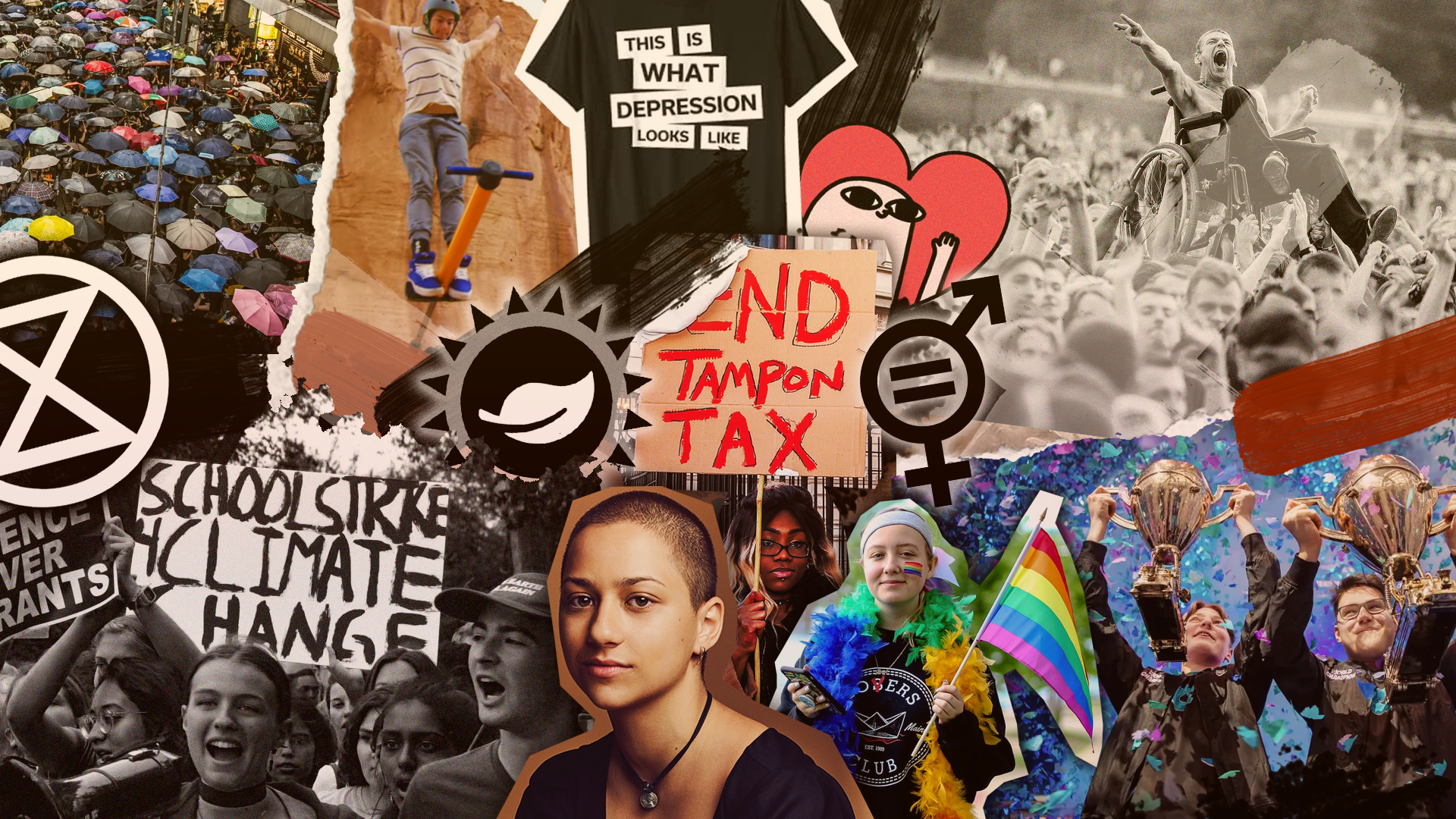By giving H&M permission to create AI models in their likeness, these models can now book their twins for shoots while working with other companies – meaning they could technically be in two different shoot locations – at the same time.
AI algorithms are getting better and better at replicating humans, mimicking physical movements and voice patterns that make them appears extremely lifelike. Speaking to The Business of Fashion, Mathilda Gvarliani described her replica as ‘like me, without the jet-lag.’
This technology is ‘something that will enhance our creative process and how we work with –marketing but fundamentally not change our human-centric approach in any way,’ says Jörgen Andersson, the chief creative officer at H&M.
Other brands including Levi’s and Hugo Boss have also experimented with the use of AI fashion models, but it has not come without backlash from the wider industry.
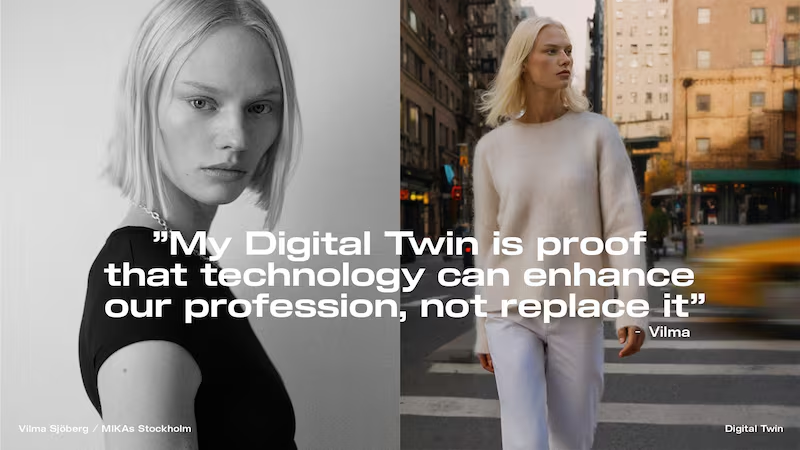
Of course, the main concern is that AI ‘twins’ ‘clones’ or ‘duplicates’ will reduce the need for human models and leave them open to further exploitation.
Five years ago, Sinead Bovell – fashion model and founder of technology education company WAYE – wrote an article for Vogue titled, I Am a Model and I Know That Artificial Intelligence Will Eventually Take My Job.
Bovell wrote, ‘If a model gives their consent to use their likeness somewhere, it can enhance the actual AI model and the data centre that the company uses, which could accelerate automation. Models may get even more exploited.’
H&M has stated that each model would be paid a negotiated fee anytime that their twin was used in a marketing campaign. However, many are curious about what fair compensation for the use of a digital twin would look like. Would that figure be standardised or vary according to each model?
Concerns about the job safety of other individuals involved in fashion photoshoots has also been raised. If real models and in-person shoots are needed less and less, what impact will this have on other industry creatives such as photographers, make-up, hair, staging and lighting personnel?
It’s predicted that high-fashion models will likely be compensated well for the use of their image, with some casting agents estimating that their payout will be in the millions of dollars.
But the use of AI models for standard product shoots threatens to make rising models who work for e-commerce brands like ASOS, H&M, and Zara completely irrelevant.
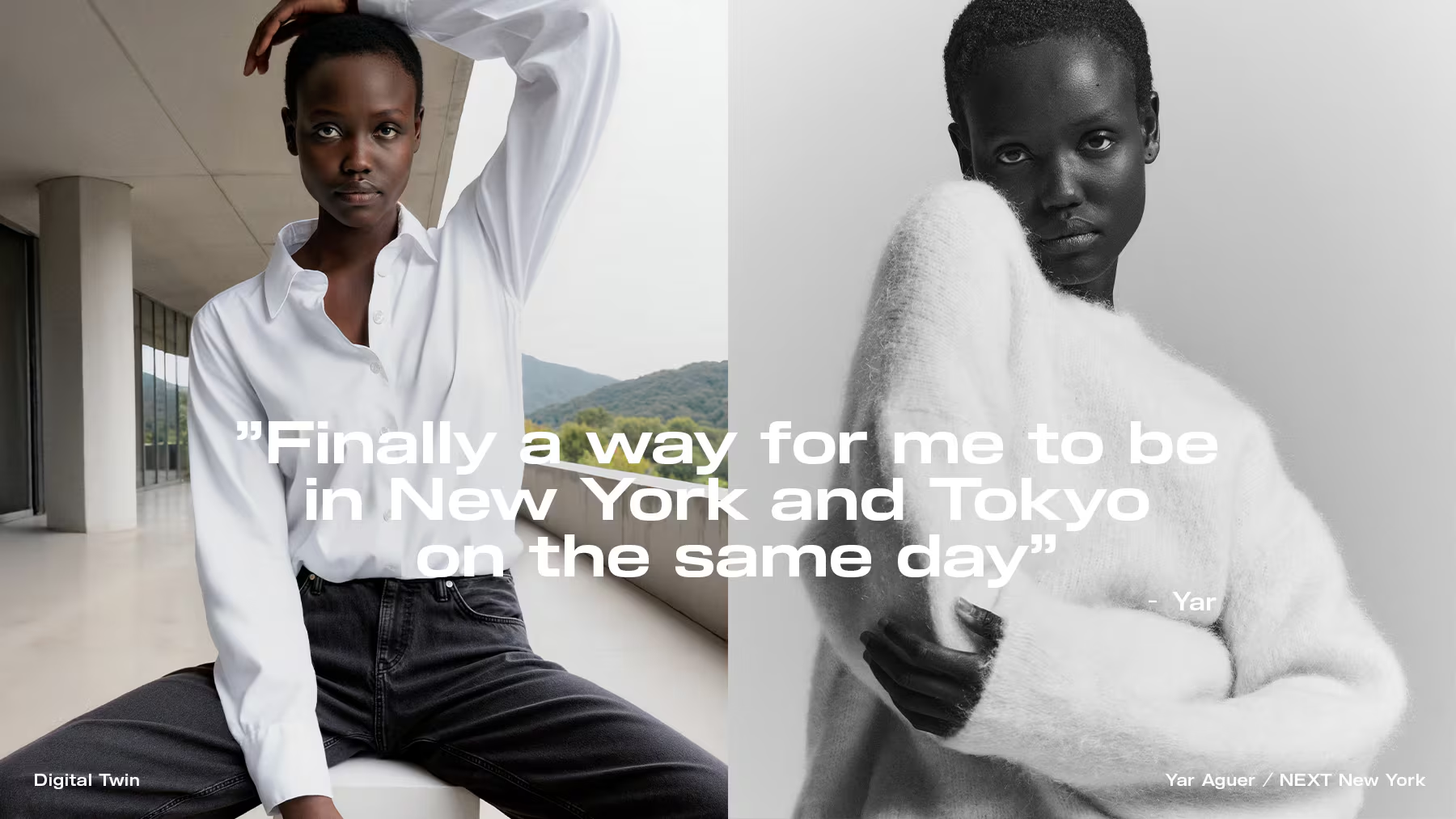
Better safeguards for models are coming into effect, though it’s unclear whether these will be enough to protect models at all models.
In 2026, the EU is set to introduce an AI Act that will require AI images to be labelled as such. H&M has already stated it is prepared to watermark images that feature AI. Across the pond in the US, The Model Alliance’s Fashion Workers’ Act will require consent from models for AI usage when it enters into law in June of this year.
‘There is the erosion of human work especially at the entry level,’ said Ingo Nolden, Mathilda Gvarliani’s Germany-based agent.
Nolden explained how he once greenlit an AI project involving one of his models before backing out over worries about the lack of control that comes with granting image licenses to a total third party.
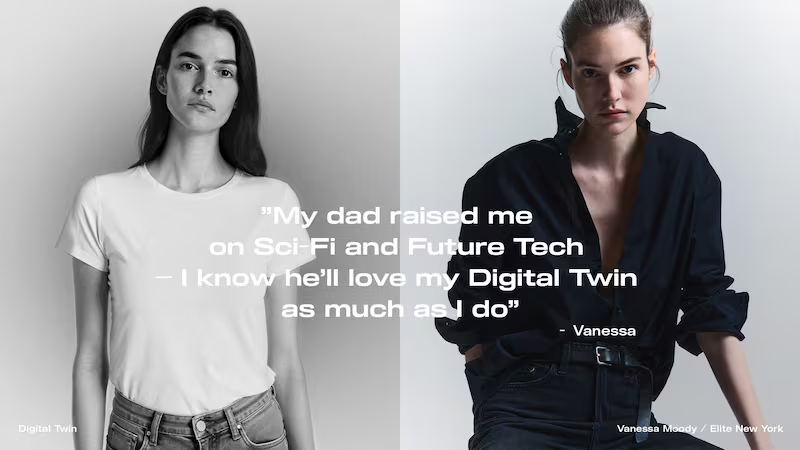
On the other hand, some in the fashion industry are welcoming the change.
Michael Musandu, the founder of Lalaland – an agency which creates AI models, says the technology will help boost diversity. ‘As a person of colour, I never got to see models that represented this diversity or inclusion perspective,’ he says.
Musandu suggests that AI is beneficial all the way around, saving brands money and ensuring that models of all shapes, sizes, and colours are included – overcoming the challenges posed by organising a large number of shoots each year.
But the use if AI doesn’t always mean greater inclusivity. In fact, it can result in quite the opposite. Back in 2023, Taiwanese-American model Shereen Wu posted to social media, blasting an agency for using an image of her that been changed so she looked white.
Anticipating the negative response to its ‘AI twins’, an H&M spokesperson released a statement saying: ‘While we understand that this will spark opinions, discussions, and uncertainty, we are humble in acknowledging that we do not hold all the answers at this point.
‘We will continue to explore with other creatives within the industry to see what generative AI can bring to any creative process, while ensuring we maintain our human-centric approach.’
It seems many models working for H&M have no problem with their likeness being digitally replicated, likely because this entails earning more income for less work. But the rising use of AI-generated models could spell trouble for emerging talent, as well as those looking to rise up the ranks of the modelling industry.
